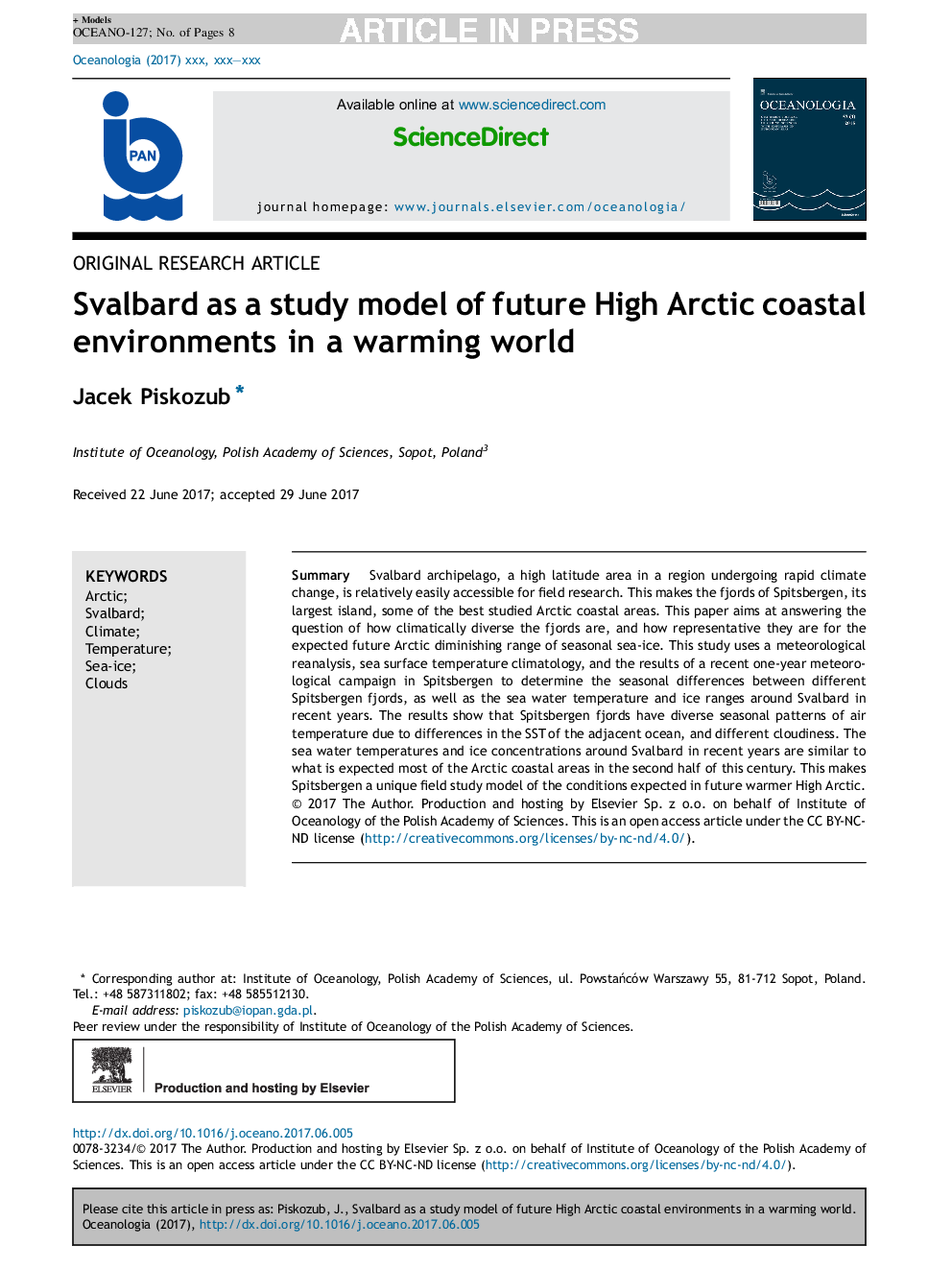| Article ID | Journal | Published Year | Pages | File Type |
|---|---|---|---|---|
| 8400059 | Oceanologia | 2017 | 8 Pages |
Abstract
Svalbard archipelago, a high latitude area in a region undergoing rapid climate change, is relatively easily accessible for field research. This makes the fjords of Spitsbergen, its largest island, some of the best studied Arctic coastal areas. This paper aims at answering the question of how climatically diverse the fjords are, and how representative they are for the expected future Arctic diminishing range of seasonal sea-ice. This study uses a meteorological reanalysis, sea surface temperature climatology, and the results of a recent one-year meteorological campaign in Spitsbergen to determine the seasonal differences between different Spitsbergen fjords, as well as the sea water temperature and ice ranges around Svalbard in recent years. The results show that Spitsbergen fjords have diverse seasonal patterns of air temperature due to differences in the SST of the adjacent ocean, and different cloudiness. The sea water temperatures and ice concentrations around Svalbard in recent years are similar to what is expected most of the Arctic coastal areas in the second half of this century. This makes Spitsbergen a unique field study model of the conditions expected in future warmer High Arctic.
Related Topics
Physical Sciences and Engineering
Earth and Planetary Sciences
Oceanography
Authors
Jacek Piskozub,
